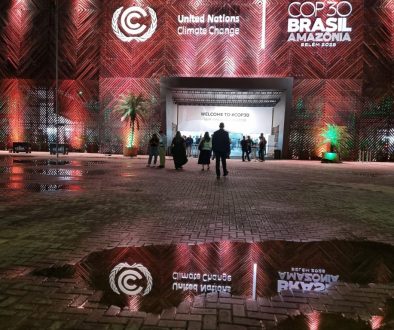Going green? Paper is the way to go.
We are told to ‘save the planet and go digital’ or save the environment by opting for e-billing. You may even have ‘please consider the environment…’ on your emails.
Let us stop buying into claims by service providers that going paperless saves trees and combats climate change.
Both sides of the story
“We live in the digital age – an age of convenience and accessibility. But these benefits should not be promoted as ‘greener’ than print,” says PAMSA’s Jane Molony.
Paper is produced from a renewable resource – wood. All paper produced in South Africa comes from plantation-grown trees, recycled paper or sugar cane. It does not come from indigenous forests but from sustainably managed timber plantations.
Around 600 million trees across 762,000ha are specifically farmed for pulp and paper manufacturing. These act as massive carbon sinks, absorbing millions of tons of carbon dioxide. When timber is harvested and turned into pulp and paper, the carbon stored is only released when the paper burns or biodegrades. (This is why we should recycle paper – to keep the carbon stored for longer.)
And just like most other crops, we plant, we harvest and we replant – 260,000 new trees every day!
The darker side of digital
In his report Print vs Digital Media: False Dilemmas and Forced Choices, Don Carli, a senior researcher at the Institute of Sustainable Communication, says: “While paper mills emit visible plumes of steam, and waste paper piles up in plain sight, the invisible ‘grey energy’ used to manufacture digital technologies and the toxic ‘e-waste’ associated with electronics are largely out of sight and out of mind. ‘Dark data’ is also exchanged between computers but never seen by human eyes.”
The average American consumes almost 34 gigabytes of data daily, mostly invisible ‘dark data’, the impact of which researchers are just beginning to study.
“We don’t know the environmental impact of saving a document on a server for 10 years or more. And we have no idea of the impact of extracting finite resources to make electronic devices that cannot easily be recycled safely and practically,” says Hans Wegner, chief sustainability officer of the National Geographic Society. (See eQ JOURNAL ISSUE 004 – Sappi)
Notably, Greenpeace has identified electronic waste as the fastest growing component of the municipal waste steam.
The bigger picture
“We need to look at the life cycle of the products we use – whether paper or digital,” stresses Molony.
“Environmentally conscious citizens who use digital media would need to consider raw materials, how and where items are manufactured, their means of transportation, how they are powered and their recyclability.”
In considering sourcing paper products and printed material, the simplest way is to buy locally produced paper or look for certification symbols (FSC, PEFC or SFI) which demonstrate a sustainable process, from the forest to the consumer.
Consumers often fall into the trap of insisting on printing on recycled paper. “Most recycled paper is imported along with a hidden carbon footprint. Locally produced, FSC-certified virgin paper is just as green, and you support the domestic economy.”
Carli sums it up: digital media doesn’t grow on trees.



